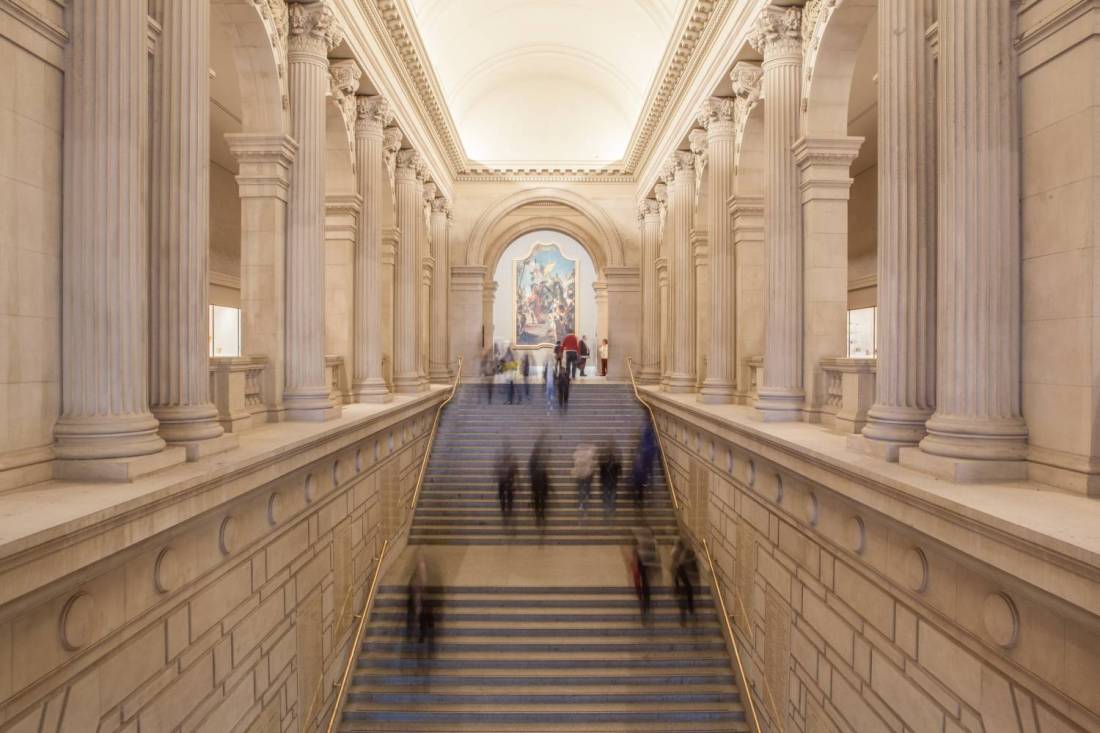Here is a 2 hour tour of the Met. It covers European painting from the Renaissance through Modernism (it also includes American Modern paintings). If you don’t have 20 hours to come up with your own tour…feel free to use mine. Lets go learn about ART!
Head up to the 2nd floor and go to the back of the Museum to the “European Paintings 1250-1800” wing.
Pre-Renaissance (~1400)
There is no perspective. Flatness reigns. Everything is religious. Its not about the form…its about the Jebus. The Glory of that Baby trumps realism.
Gallery 644
Duccio (1250-1325): Madonna and Child

Giotto (1266-1337): Adoration of the Magi
As we near the Renaissance we start to see some emotion, weight in bodies, and attempts at 3 dimensions (look at the mountain vs. the roof vs. the shooting star)–Giotto tries to create depth and fails miserably…the trying is important.
Early Renaissance (1400-1488)
We see the beginnings of real linear space/depth…we start to see detail…and finally colors other than gold.
Gallery 640
Botticelli (1845-1910): The Last Communion of Saint Jerome
Look at the roof! Its perspective! Its ham-fisted perspective but it is still perspective!
High Renaissance (1492-1530)
Things are still Religious but now it is about the art and realism…We still are going to glorify God and the Baby but now it matters HOW we do that.
The Met doesn’t really have that many great High Renaissance pieces. Sorry.
Venetian/Northern Renaissance (1450-1600)
Kind of like the Renaissance but with Protestants (or Proto-Protestants). Not as much Baby and when he does show up he looks like your baby.
Gallery 638
Titian (1490-1576)
Thats Venus. Not EVEN Christian.
Religious but realistic and not about Glory to God.
Gallery 642
Bruegel (1525-1569): The Harvesters
We are not in Italy any longer.
Gallery 643
Durer (1471-1528): Virgin and Child with St. Anne
Here we have Grandma, Mary, and Baby but instead of Glory, we get Everyfamily.
Mannerism (1520-1600)
Where High Renaissance art emphasizes proportion, balance, and ideal beauty, Mannerism exaggerates such qualities, often resulting in compositions that are asymmetrical or unnaturally elegant. The archetypal example just happens to be at the Met…but it is not on display. Come on MET!!!

El Greco’s The Vision of Saint John is the definition of unnatural elegance.
Head downstairs…then to the back of the Met and lets go see the El Grecos!!!!
Gallery 958
Unnatural Elegance and a great example of El Greco’s weird signature (sort of Vulcany/Na-Nu Na-Nuish) finger thing.

There are more…spend the time to view ALL of the El Grecos
Baroque (1600-1750)
A reaction against the grandeur of the Renaissance. We get landscapes, still lifes, dramatic light, drama, emotion, and we see the sacred as ordinary.
Stay in the weird area that is off the back of the museum and head downstairs to the Ground Floor.
Gallery 964
Rembrandt (606-1669): Flora
This is a Goddess. Its impossible to imagine a Renaissance painter creating a Goddess with those muted colors and ordinary setting.
Vermeer (1632-1675)
Very few Vermeers exist…see the few that the Met has. The use of light is stunning.
Head back up to the SECOND floor and find…
Gallery 637
Caravaggio (1571-1610): The Denial of St. Peter
Drama, emotion, light, sacred as ordinary…check, check, check, check. That is Baroque as fuck.
The second from the right is Carvaggio himself.
Rococo (1720-1760)
If you like lighthearted Aristocrats, you can find your own damn Rococo paintings. I personally am not going to waste my time with this dreck. Here is an example of how bad it is.
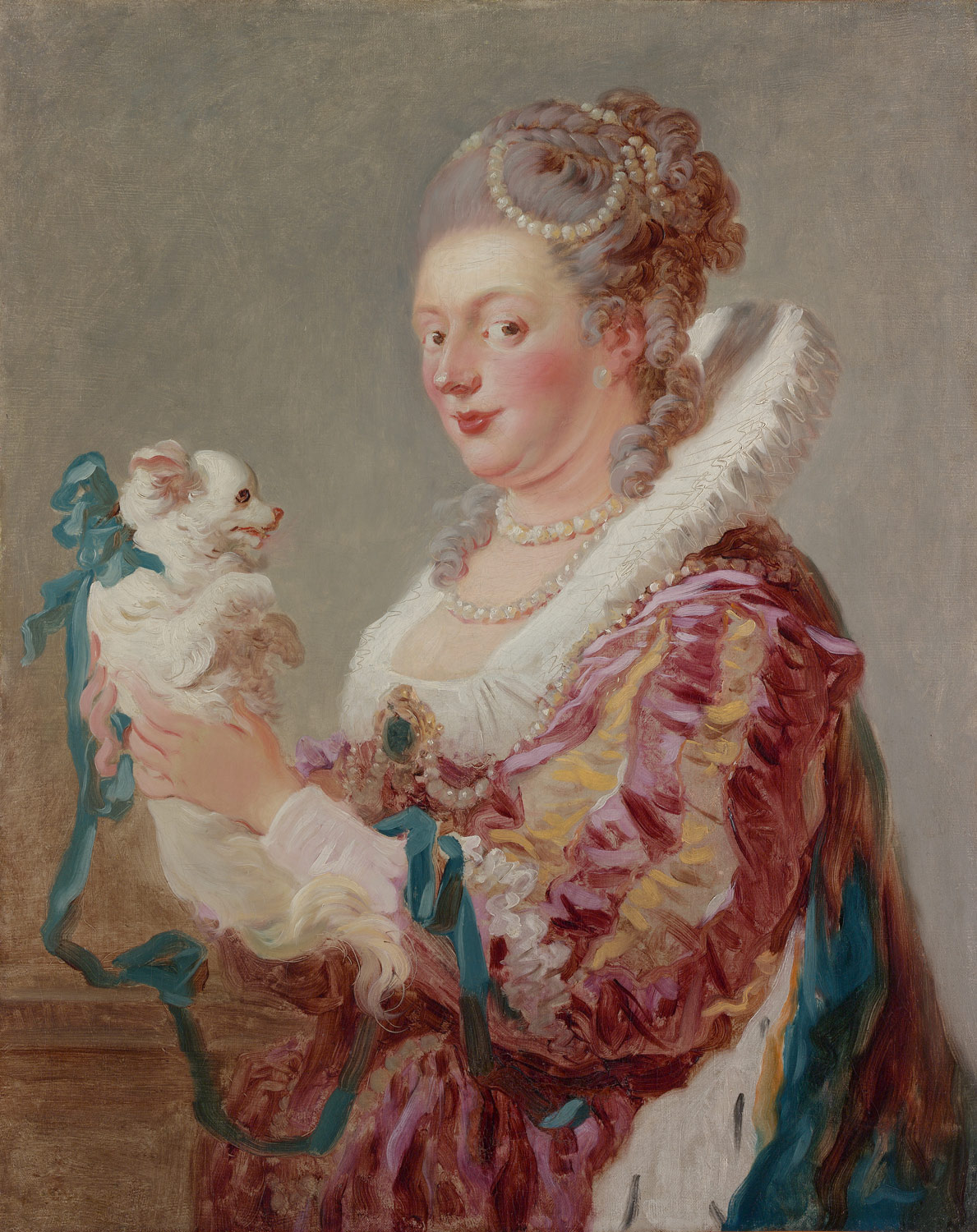
Neoclassical/Enlightenment (1760-1830)
Static poses (even statuesque)…classical subjects…explicitly looking back to Greece and Rome.
Gallery 631
Jacques David (1748-1825): The Death of Socrates

Every person in that painting could be a Greek statue. Every angle in the background is perfect. The subject speaks for itself. The quintessential Neoclassical painting.
Romanticism (1800-1850)
Wild weather, ambiance, dramatic scenes of nature, emotion, passion.
Gallery 633
Goya (1746-1828)
The Met doesn’t really have any of his great “Romantic” paintings. Here is an example of a Romantic Goya that you won’t see at the Met.

Instead they have a bunch of great portraits that are absolutely worth your time.

If you want to venture over to the American wing you can see this most Romantic of Romantic paintings.
Gallery 760

With Romanticism we move to the 19th and Early 20th Century European Paintings Wing.
Gallery 807
Caspar David Friedrich (1774-1840): Two Men Contemplating the Moon

That is a super Romantic painting.
Realism (1840-1870)
Lower society…everyday scenes.
Gallery 802
Millet (1814-1875)

Daumier (1808-1879)
Impressionism (1870-1900)
Reaction against photography…no longer is the goal to be real…middle class….first time industrialization allowed for leisure…painting is portable and moves outside.
Gallery 815/816
Degas (1834-1917) The Dance Class
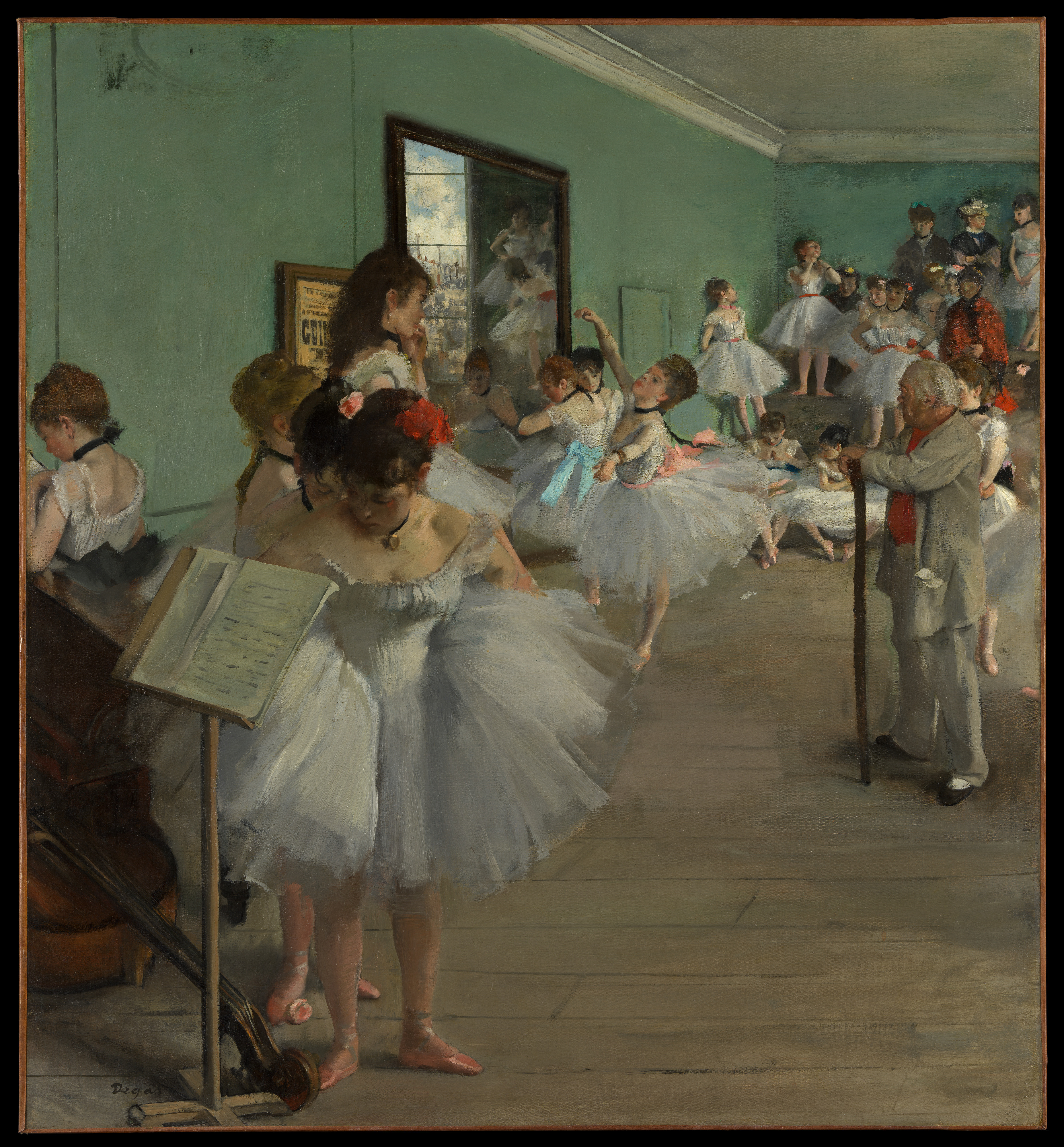
Gallery 818/819
Monet (1840-1926)
Gallery 820
Pissarro (1830-1903)
Post Impressionism (1880-1920)
Impressionism with outlines…form returns.
Gallery 822/825
Van Gogh (1853-1890)

Gallery 825
Seurat (1863-1945)

Dot Seurat gives us the definition of middle class leisure during industrialization.
Gallery 826
Cézanne (1839-1906)
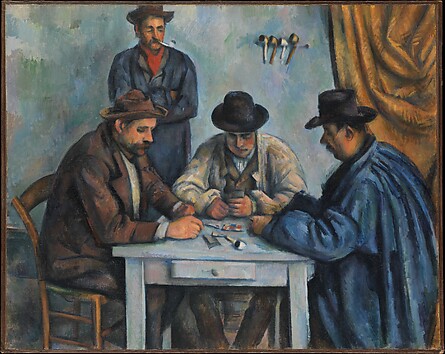
Modern (1900-)
Gallery (823/830)
Picasso (1881-1973)
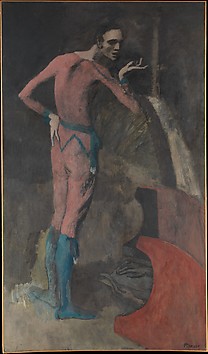
Take the elevator downstairs…
Gallery 901
Dali (1904-1989)

This is a looooong way from the Renaissance.
Gallery 906
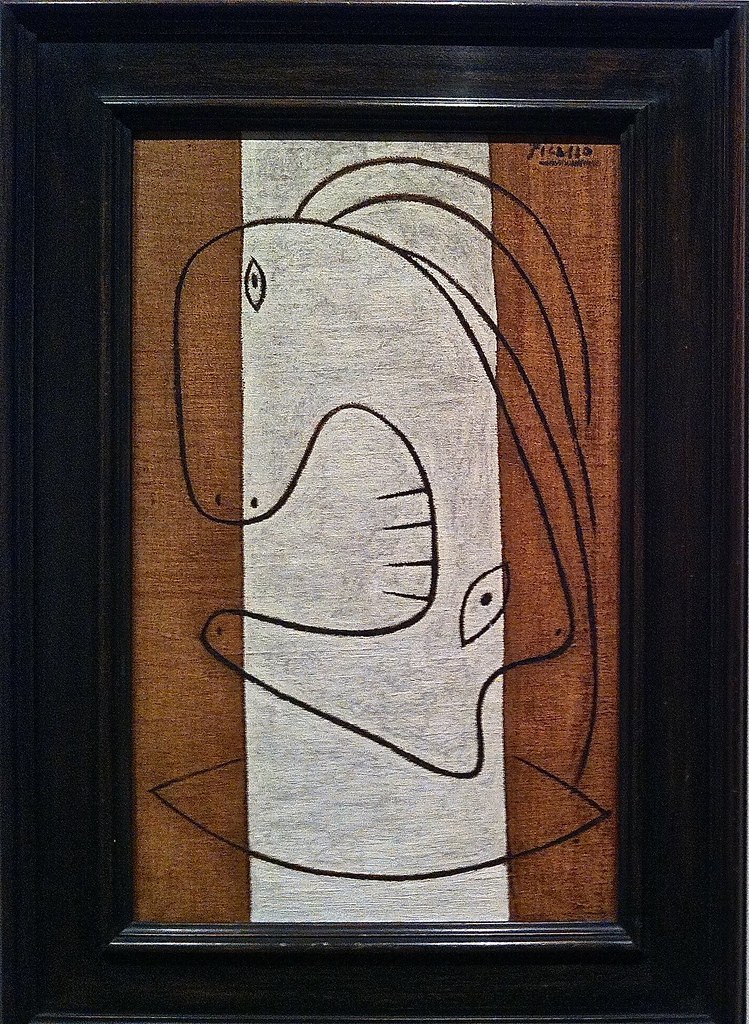
Picasso’s lover right before dumping her. Eyes, nostrils, chin dimple (interesting), three hairs, four teeth, and a collar on an ugly background.
Take the elevator back upstairs
Gallery 919
Rothko (1903-1970)

And we no longer even have recognizable subjects.
Gallery 918
Pollock 1912-1956

And we no longer even touch the brush to the canvass.
